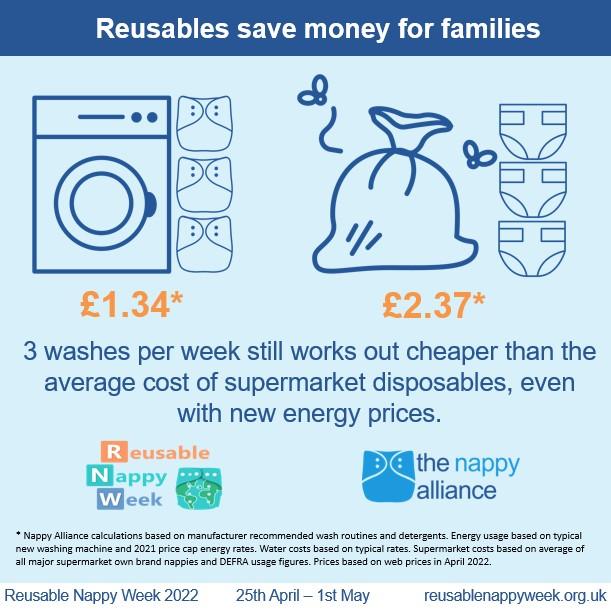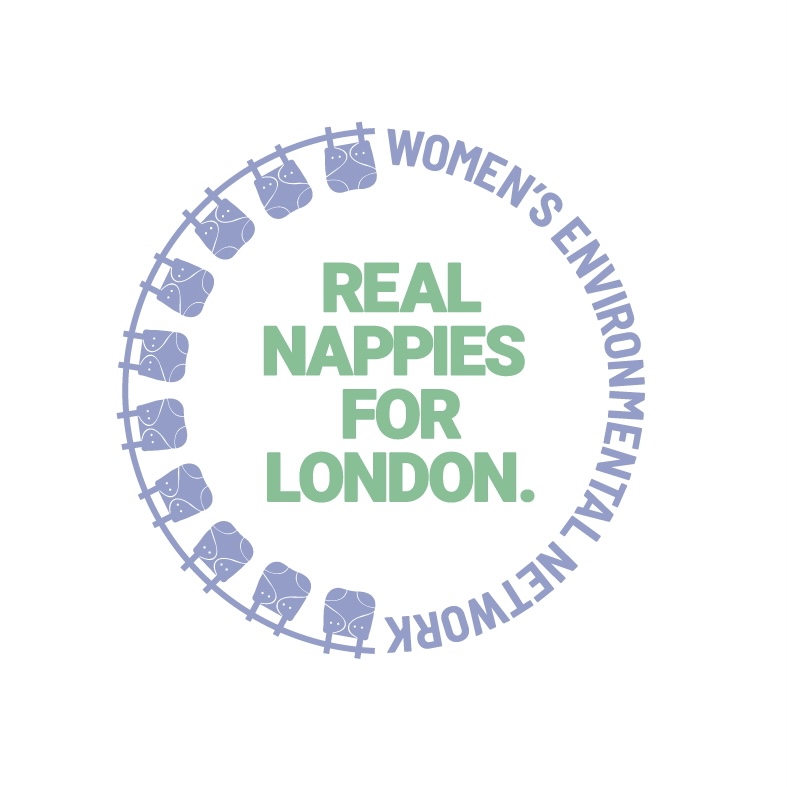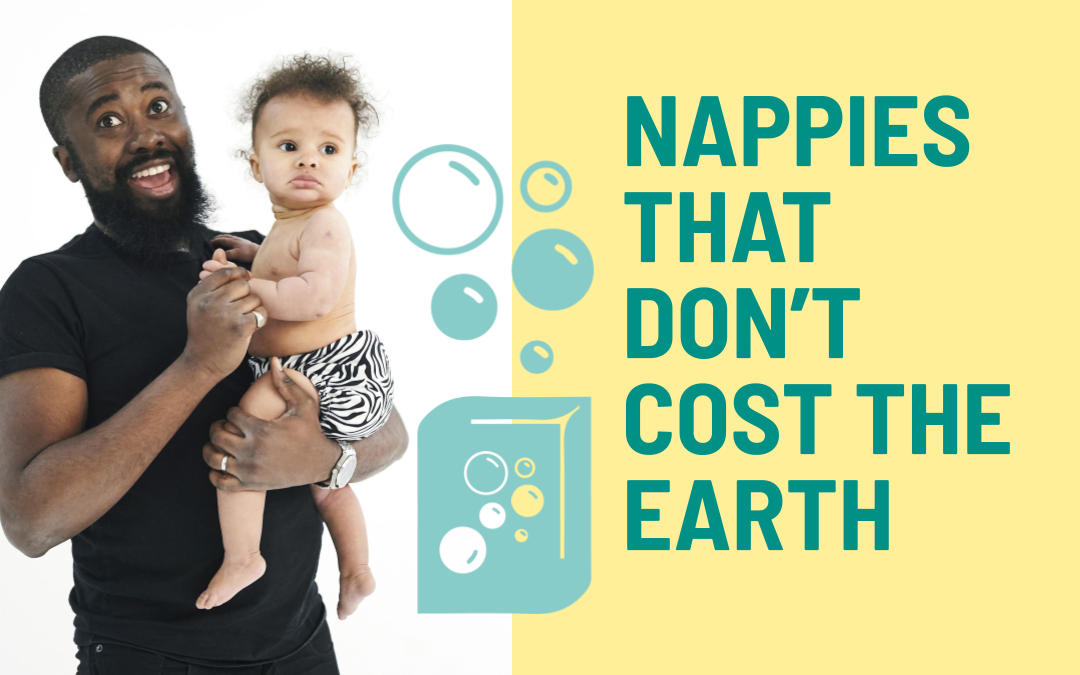You may have seen an increase in price of disposable nappies within the last year. The latest survey of baby banks, conducted by Little Village in September, showed that more families are now having to resort to reusing disposable nappies, or to using cheaper products such as sanitary pads. Many also have to choose between skipping nappy purchases or cutting their heating, following the energy price cap increases this year.
If you are a parent, we are here to reassure you that reusable nappies are still an effective way for you to save money, in the face of the cost-of-living crisis. We have all the tips for how you can save money, from the first purchase to the low-cost wash cycles.
Buying Upfront
We have calculated that you can save up to £6 a week by using reusable nappies, which is equivalent to saving £780 over 2.5 years, the average time that your baby will be in nappies. You can double these savings with subsequent children by reusing the nappies, and as they are made with durable materials and built to last, you can sell them and get more money back.
Here are two further ways you can reduce, or even eliminate, that upfront cost:
Get nappies for free
If you are a parent-to-be, or have a baby in nappies under the age of 18 months, and you live in one of our voucher participating London Boroughs, we can help you with the upfront cost of buying reusable nappies. You can claim a free reusable nappy voucher worth up to £54.15, either by applying online or attending one of our upcoming events. This voucher can be redeemed with one of the listed retailers on our suppliers page, or it can be put towards a paid-for washable nappy laundry service.
Ask for reusable nappies from friends and family as a new baby or Christmas gift. Additionally, check if we are running a local Give & Take event near you. These events have been extremely popular, with so many happy parents donating and taking away good quality, preloved nappies (as well as baby clothes and maternity wear) completely for free. There is no obligation to bring donations, and you can connect with other parents and hear their own tips and experiences.
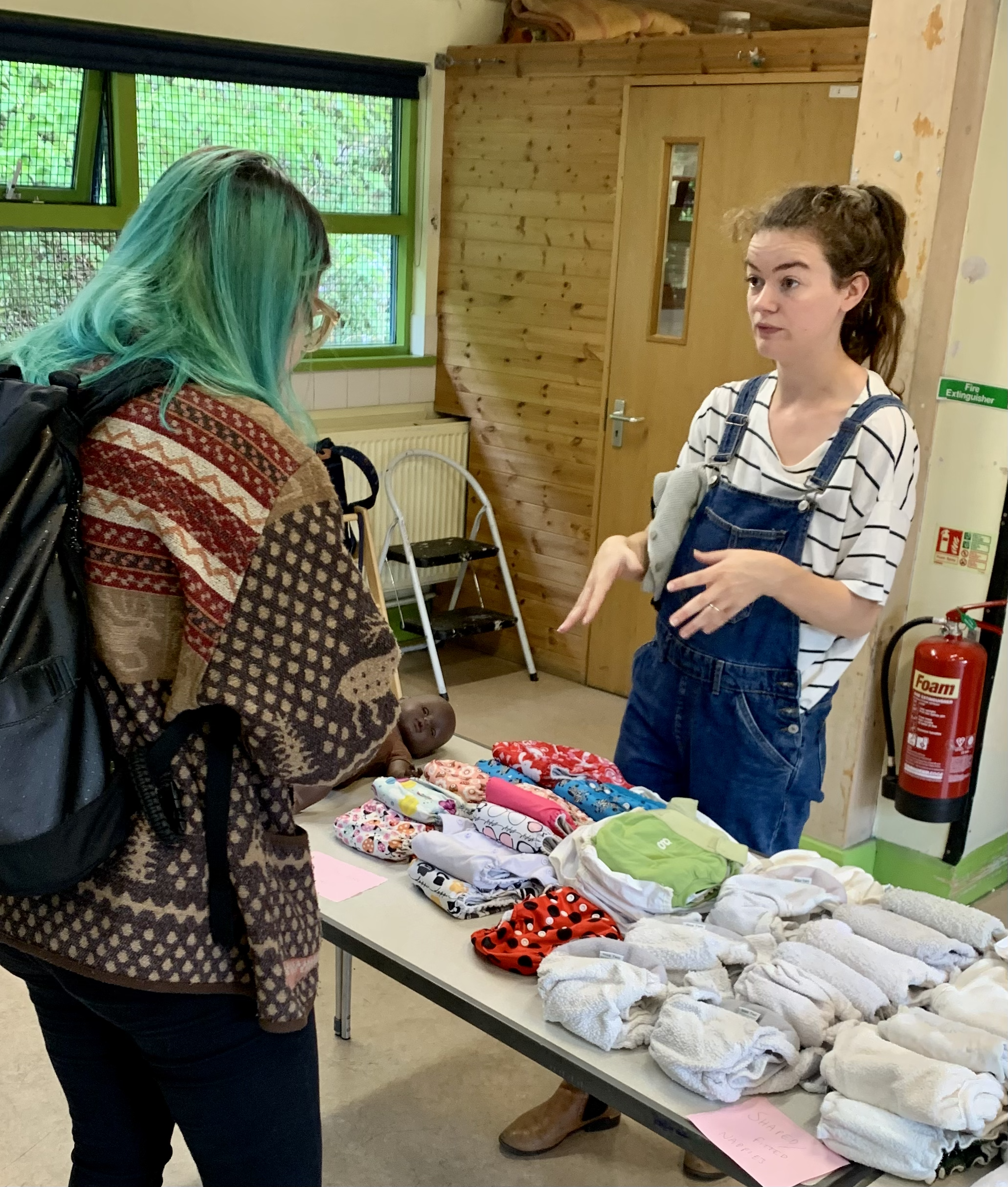
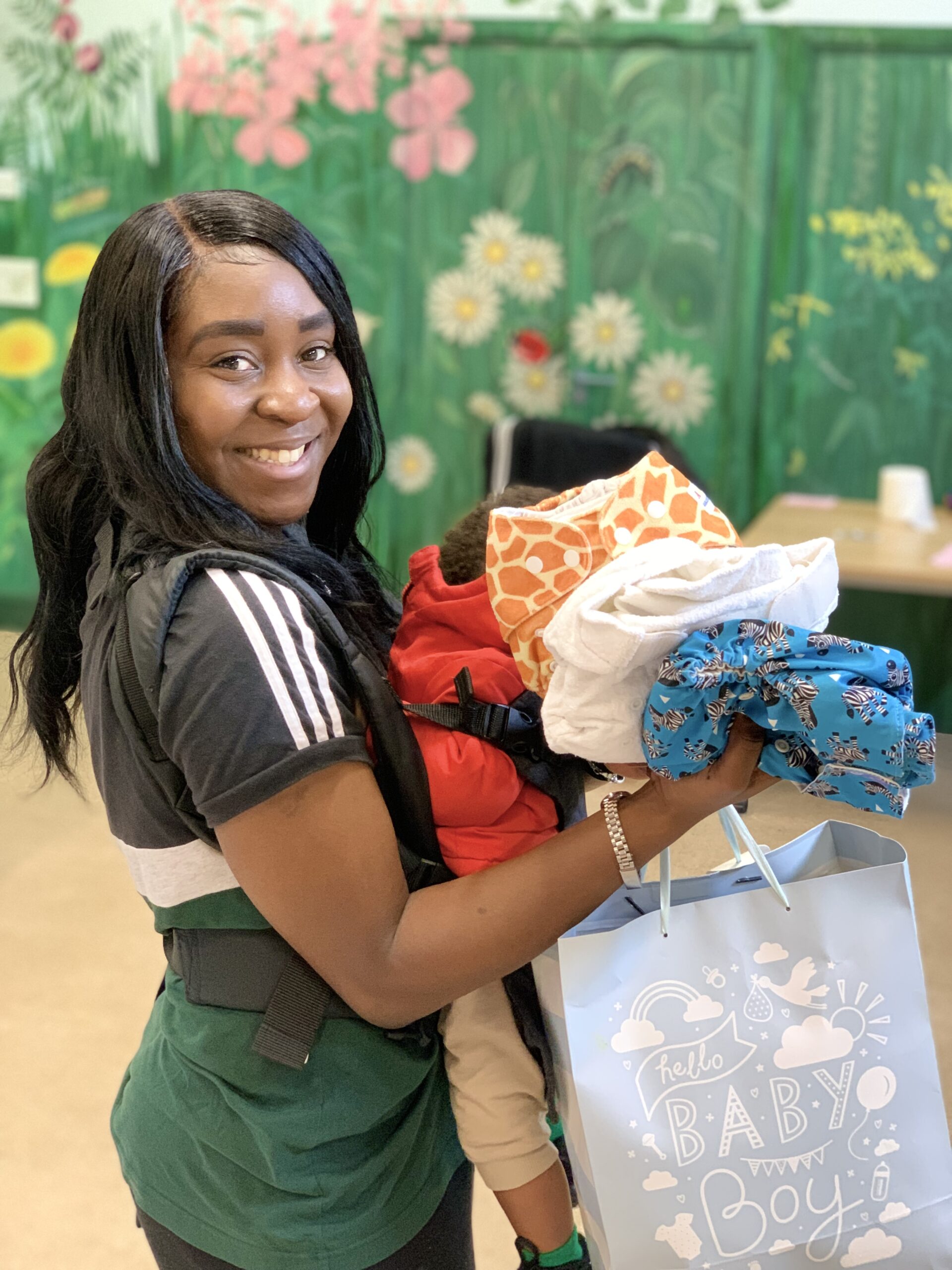
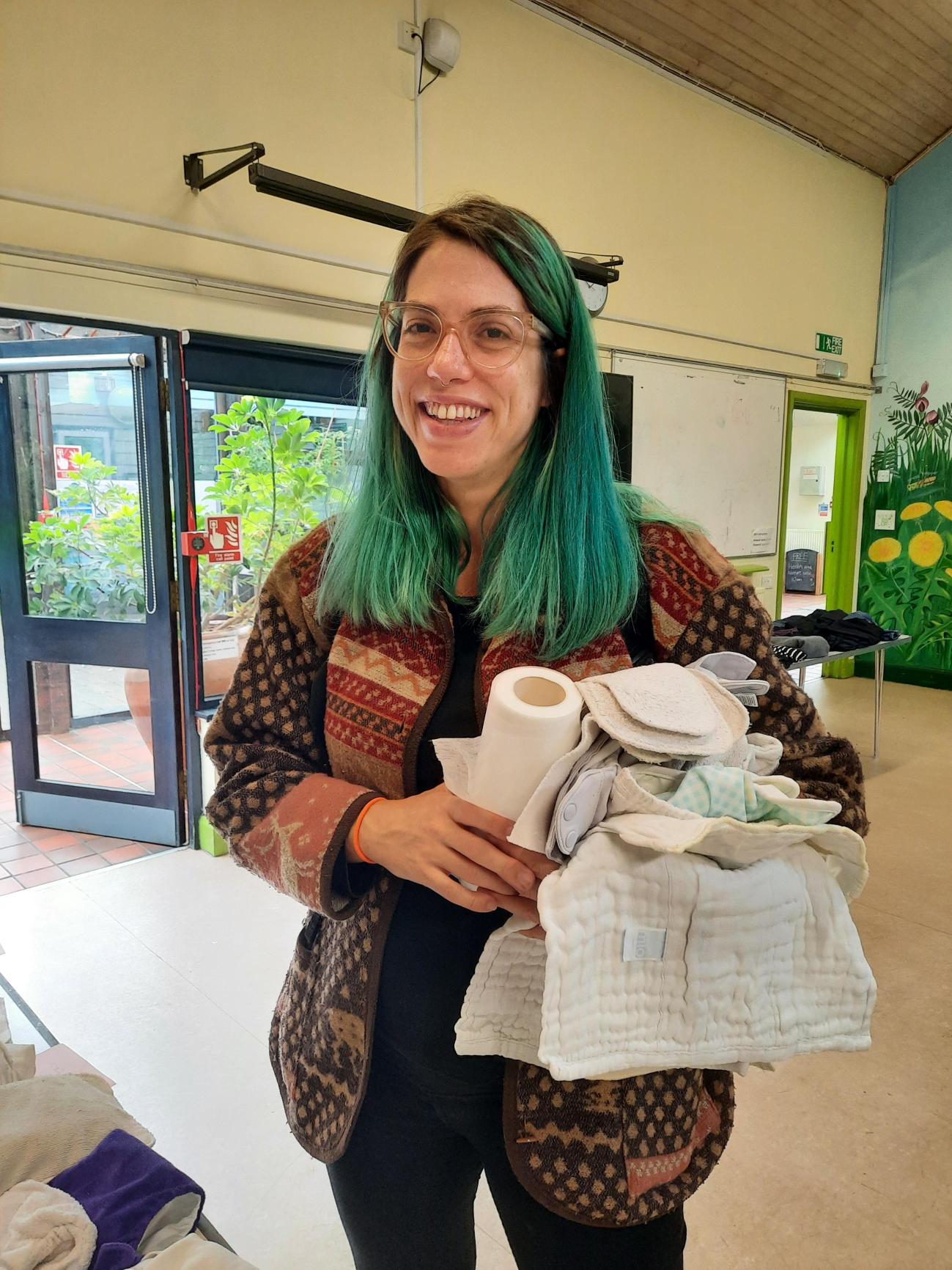
Parents Zhané and Inês came to our September Give & Take at Islington Ecology Centre and took away some great bundles of preloved nappies and baby clothes for free
Buy or rent secondhand
There are many online groups of parents who are selling no longer needed reusable nappies for a fraction of the retail price, a great way to cut down costs. We wrote a handy blog on buying secondhand nappies for Zero Waste Week, with tips on where and how to buy preloved nappies.
You can also check the UK Nappy Network map to find your nearest nappy library. These Cloth Nappy Libraries are usually run by parents with experience of using reusable nappies, so they are perfect places to go to for advice and to rent out nappy kits for a small weekly fee. There are three London-based nappy libraries that you can check to see if you live in their catchment areas.
Washing
No need to soak or hand-rinse
Reusable nappies have come a long way, modern designs do not require soaking or hand-rinsing. The washing machine does the work for you. In fact, soaking nappies can potentially damage them in the long run, and will be a waste of water and money.
Pre-weaned poo (breast-fed or formula-fed) is water soluble. This means the nappies can be “dry pailed” in a bucket or wet bag until wash day, there is no need to hand-rinse before storing. Once your baby is on solid food, the poo should be flicked off the nappy directly into the toilet. The cold rinse cycle on your washing machine will easily clean any soiled nappies and drain the dirty water away before the temperature wash.
Combine your washes
Once the rinse cycle is done, you can add any other household items that need washing – for example, dirty baby clothes, towels or bedding – in the temperate wash. Following the energy cap announcement, the Energy Savings Trust has estimated that washing on a full load can reduce your washing by one load a week, offsetting around 13kg CO2 and saving you an extra £10 per year. Just make sure that your washing machine is not overloaded – you can follow the visual guide below (The Nappy Lady 2022) on what a full load looks like. Even if you are only using reusable nappies part-time, you can still save money and energy by putting on a mixed load.
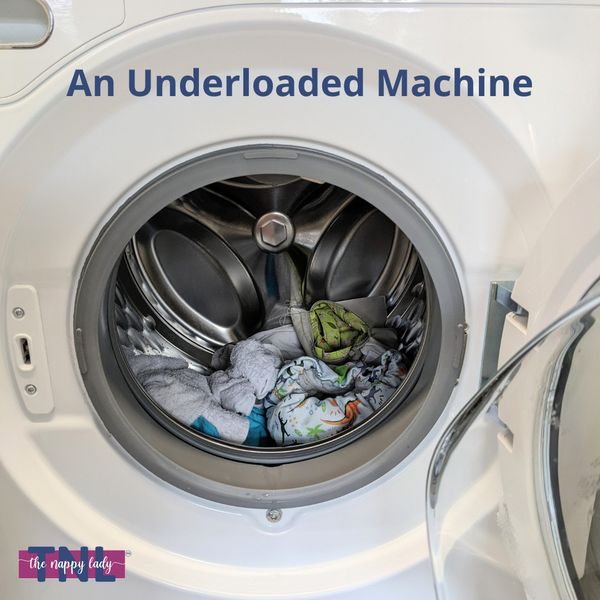
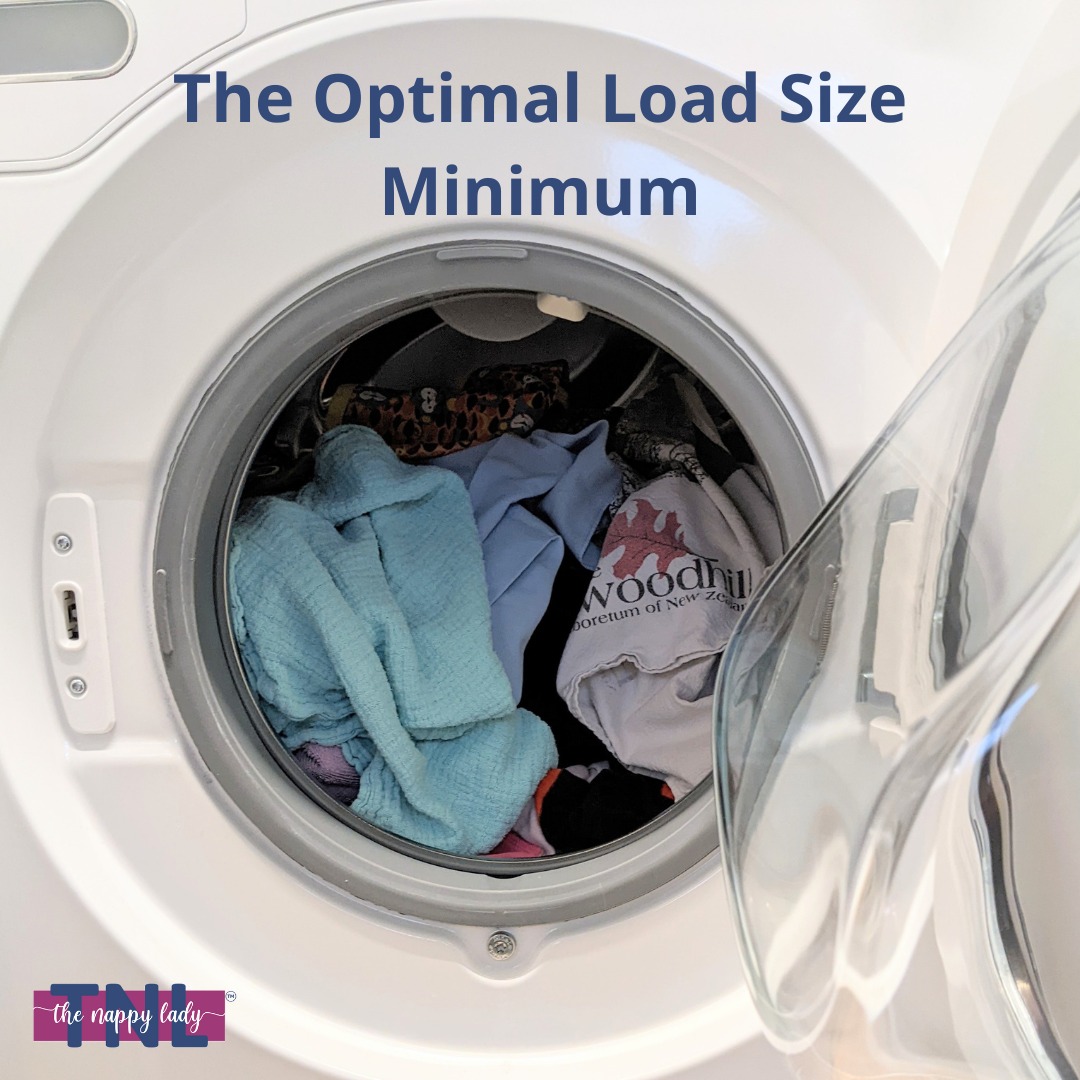
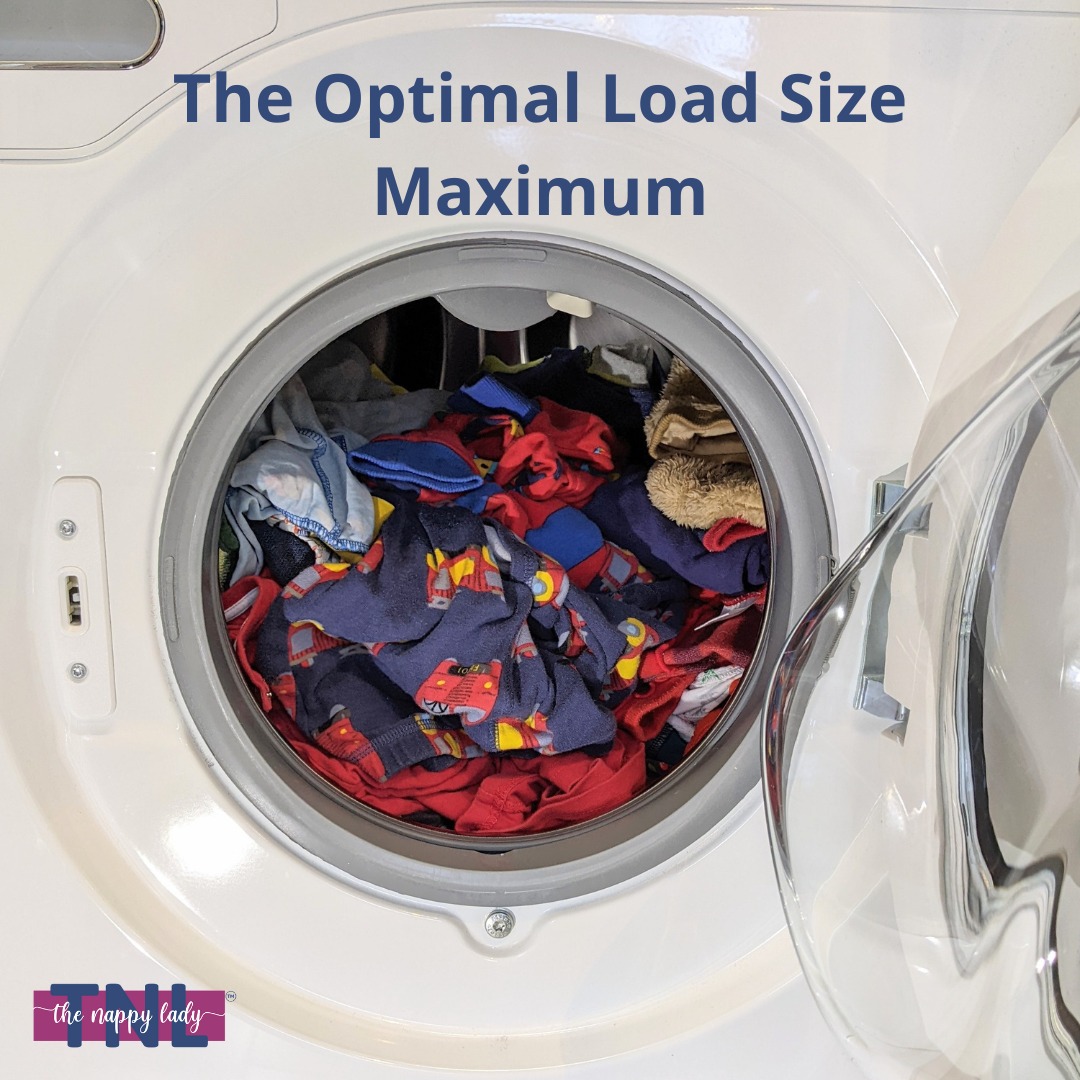
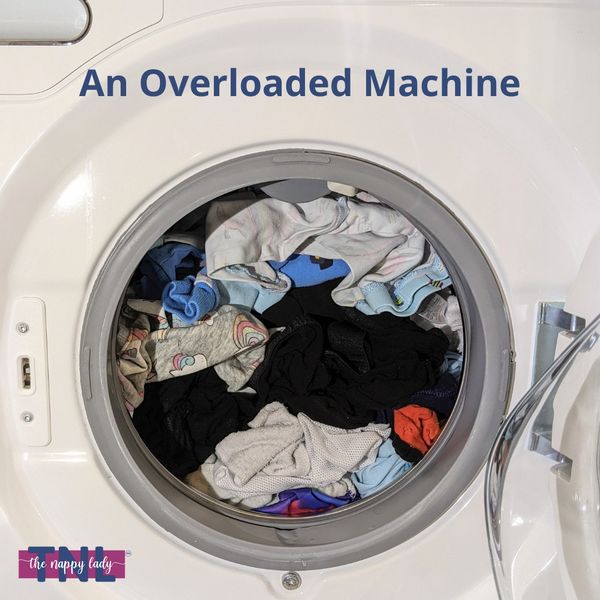
Image credit: The Nappy Lady, August 2022
We recommend washing reusable nappies on a cotton cycle, between 40-60 degrees. Nappies should be washed at 60 degrees for a newborn or pre-weaned baby, but once they are on solid foods then the temperature can be brought down to 40 degrees. There are reusable nappy retailers that provide optional extra detergents, such as MioFresh and Tots Bots Potion that you can add to the recommended non-bio power detergent. With these extra detergents you can wash the nappies at 30 degrees, and save up to an extra £10 per year, but this should be weighed up against the cost of buying the products. At the end of the day, reusable nappies only require supermarket-brand non-bio detergent powder to be cleaned, which is very economical.
Wash overnight
Avoid the washing “hot hours” – between 4PM-7PM – when energy costs are the highest because most people are using their appliances during this time. Most modern washing machine models have a Delay Start button, which can delay the start of your wash cycle for up to 24 hours. You could use this function to either do a wash overnight for hanging up in the morning, or to do a wash cycle while you are out, which would finish when you return home. The second option would be good for parents who both work full-time, so the nappies can dry overnight.
Air-dry Reusable Nappies
Air-drying is always the best option. Even if you live in a small property without an outdoor space, you can find hacks on drying reusable nappies without taking up any extra space. Avoiding the tumble dryer can offset up to 40kg CO2 and save you up to £40 per year. Although reusable nappies can be tumble-dried on a low cool heat setting, this needs to be weighed up with the cost of running the dryer, and the potential for damaging the nappy materials over time.
Reusable nappies have every potential of being a cost-saving alternative to single-use nappies. Research from the 2008 Environment Agency report showed that reusable nappies can consume an average of 220 litres of water per week, compared to 1,550 litres of water used to manufacture a week’s worth of single-use nappies. Even with the rise in energy prices, calculations by The Nappy Alliance show that washing a week’s worth of reusable nappies is nearly half the weekly cost of disposable nappies. Whether you choose to use reusable nappies full-time or part-time, these buying and washing tips can help you save the most money and waste.
